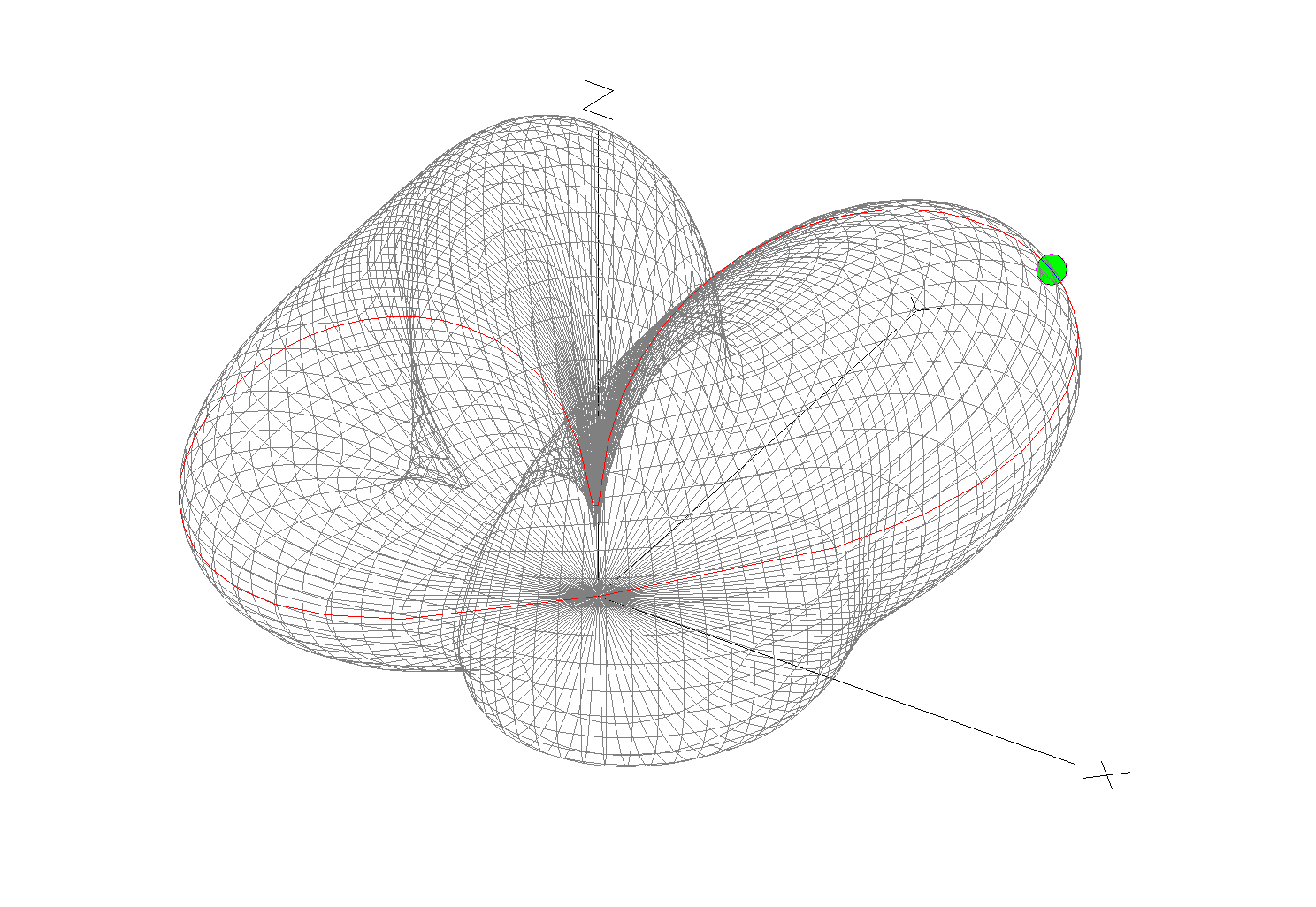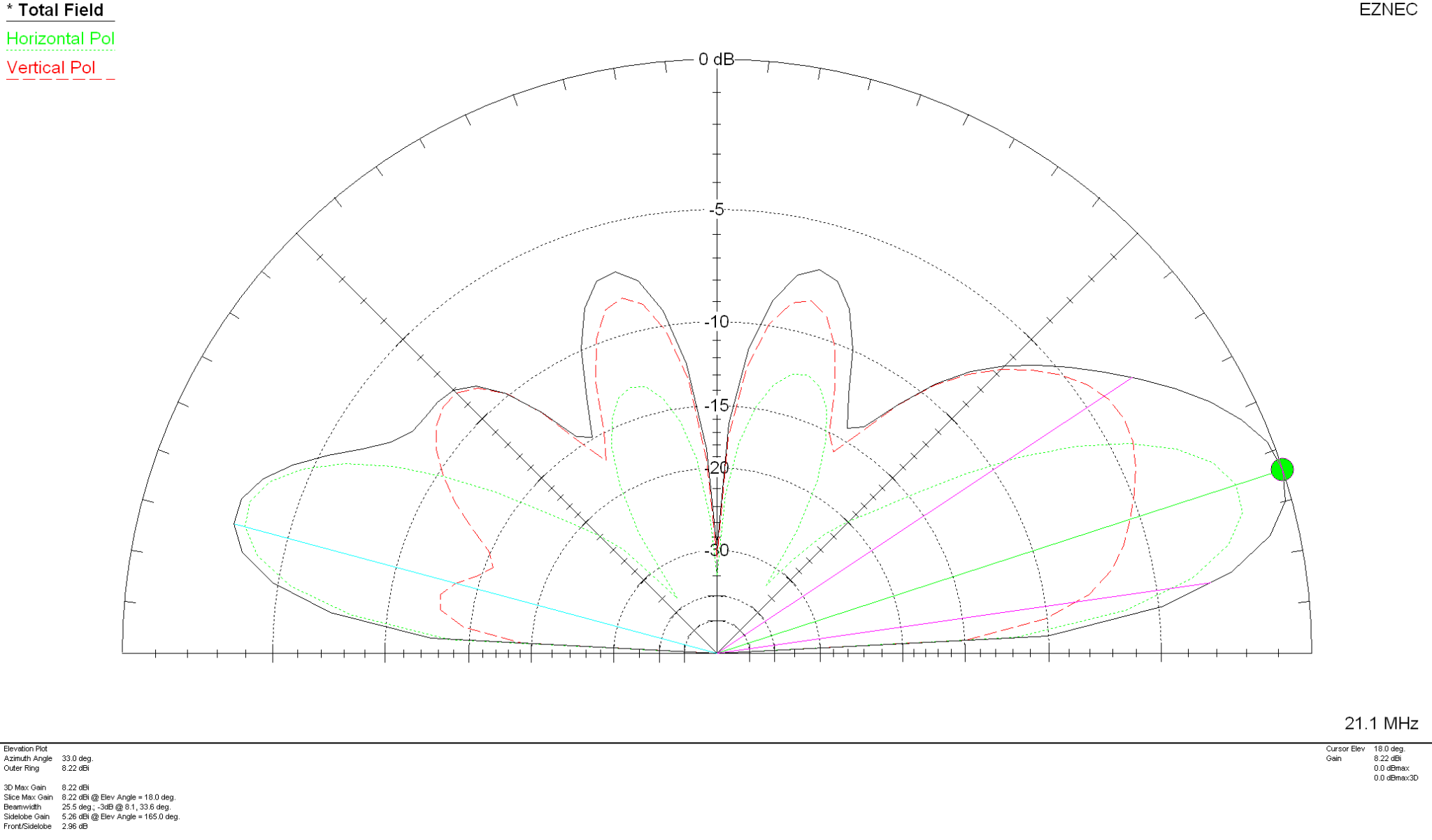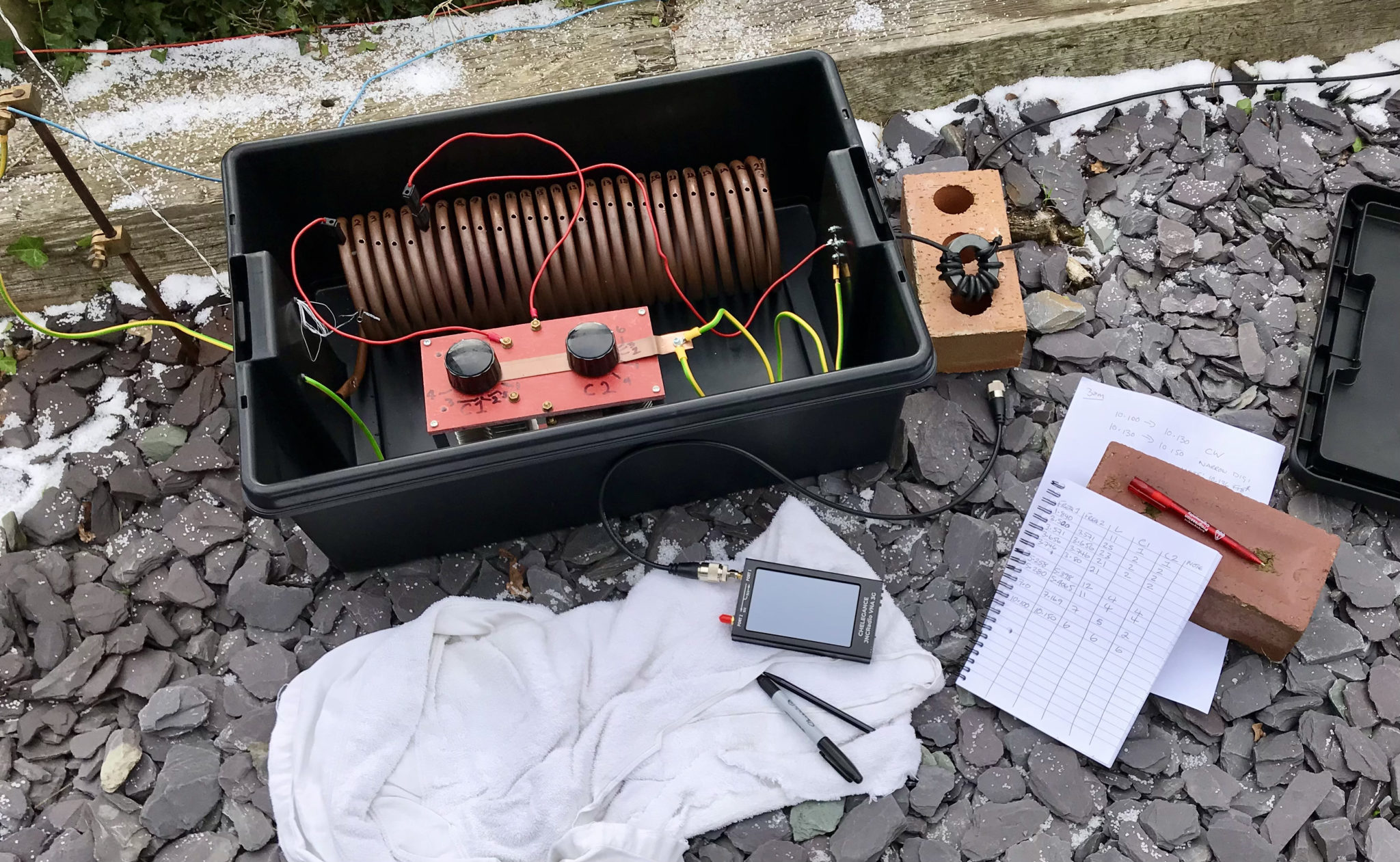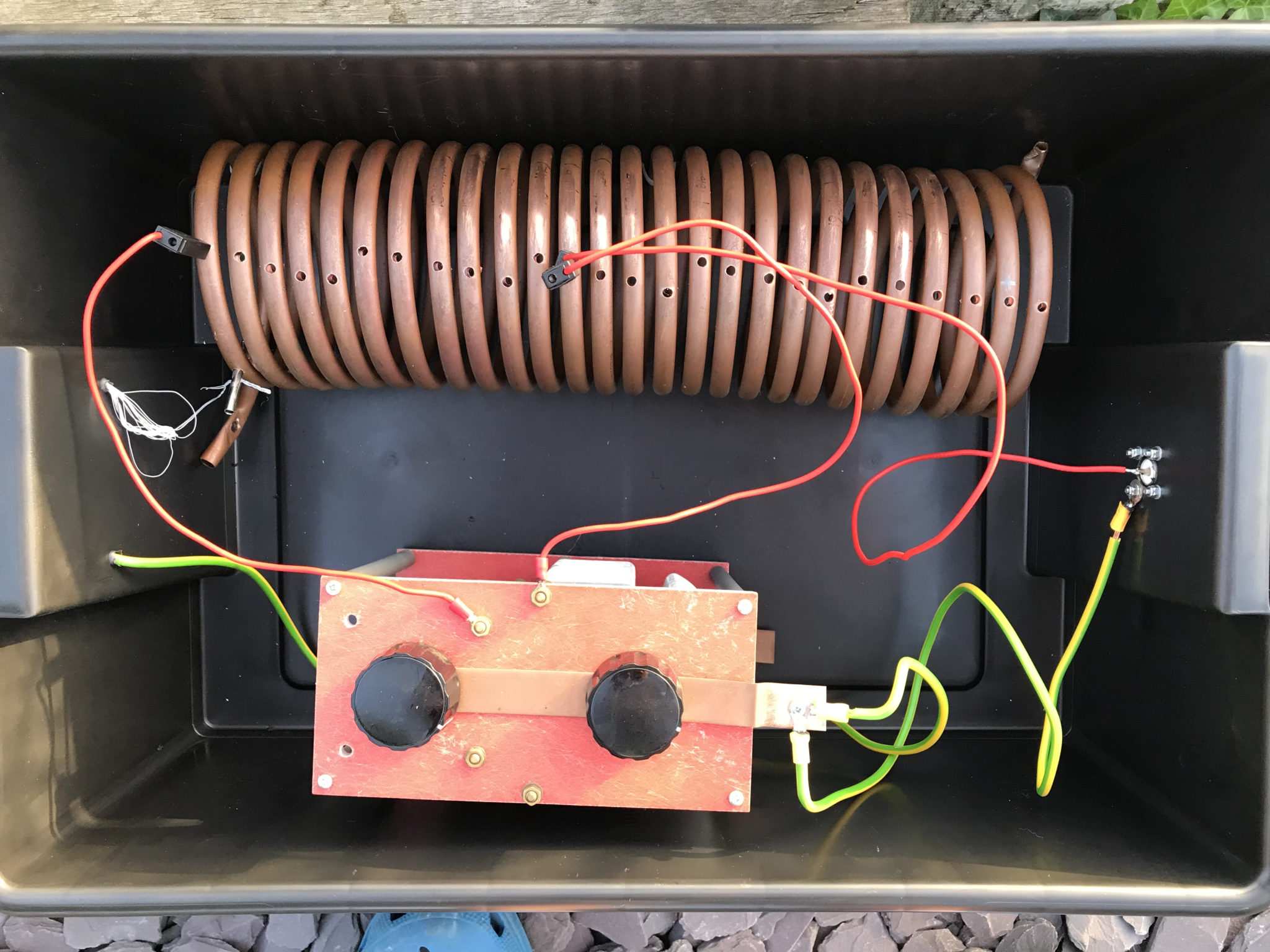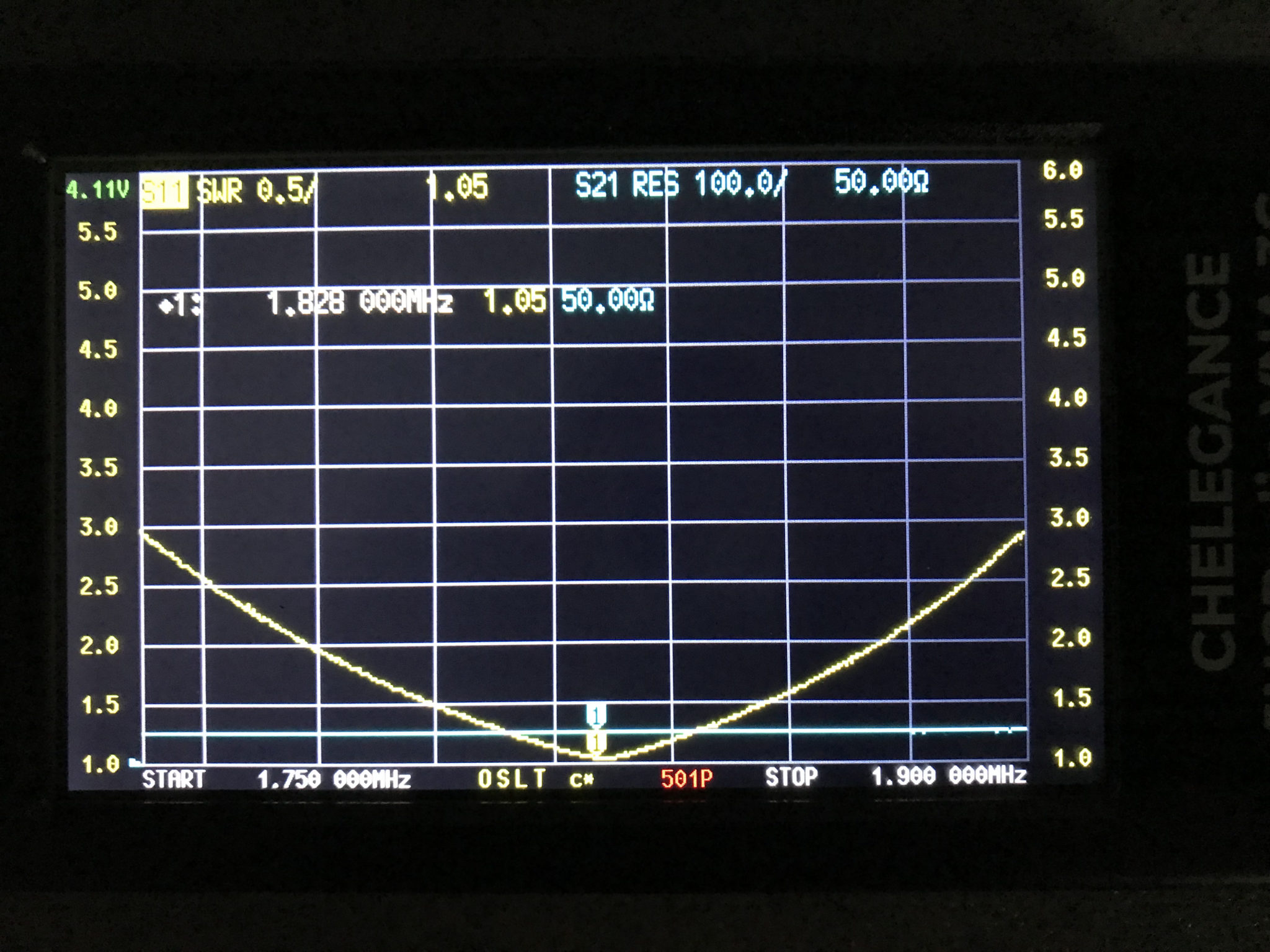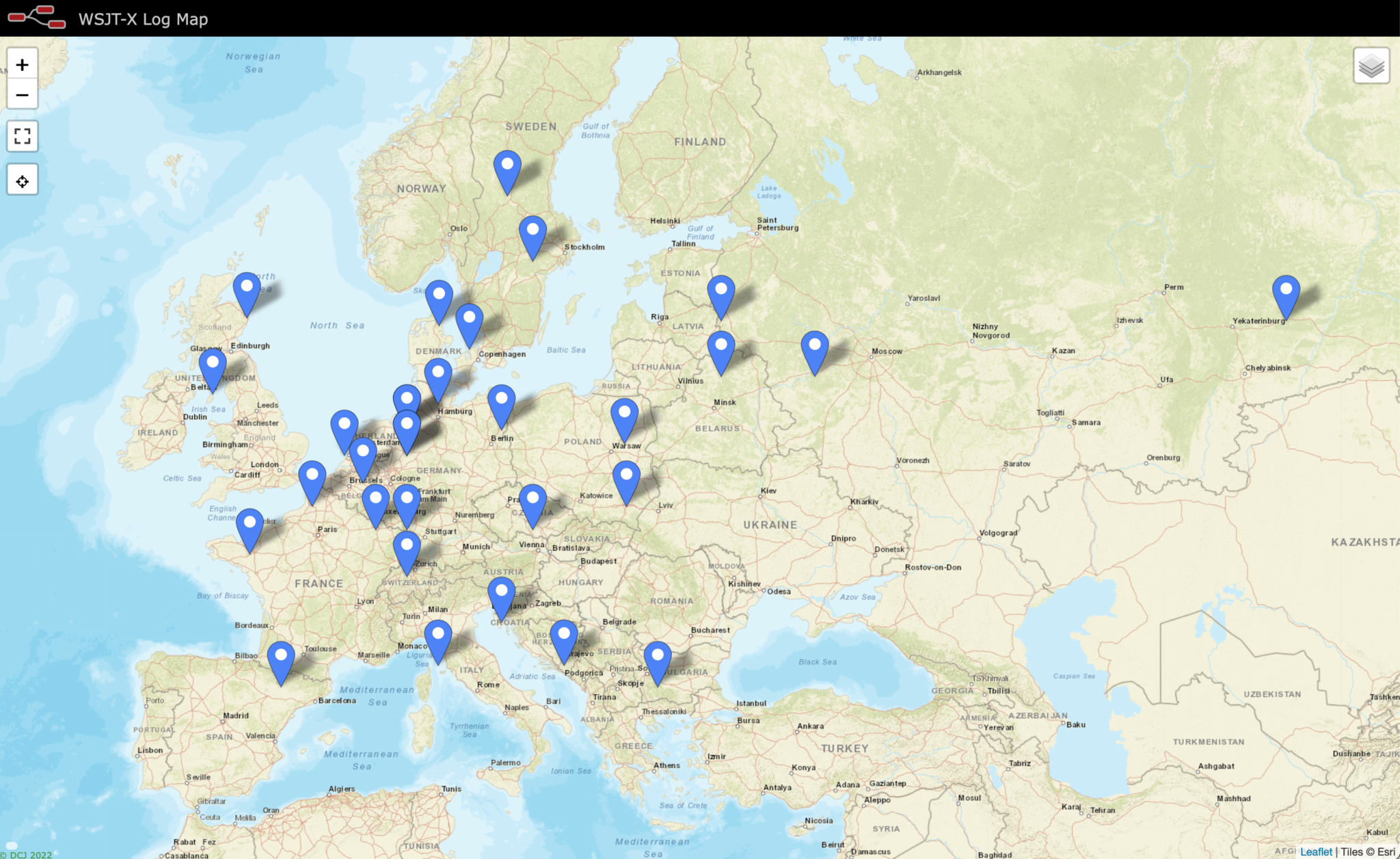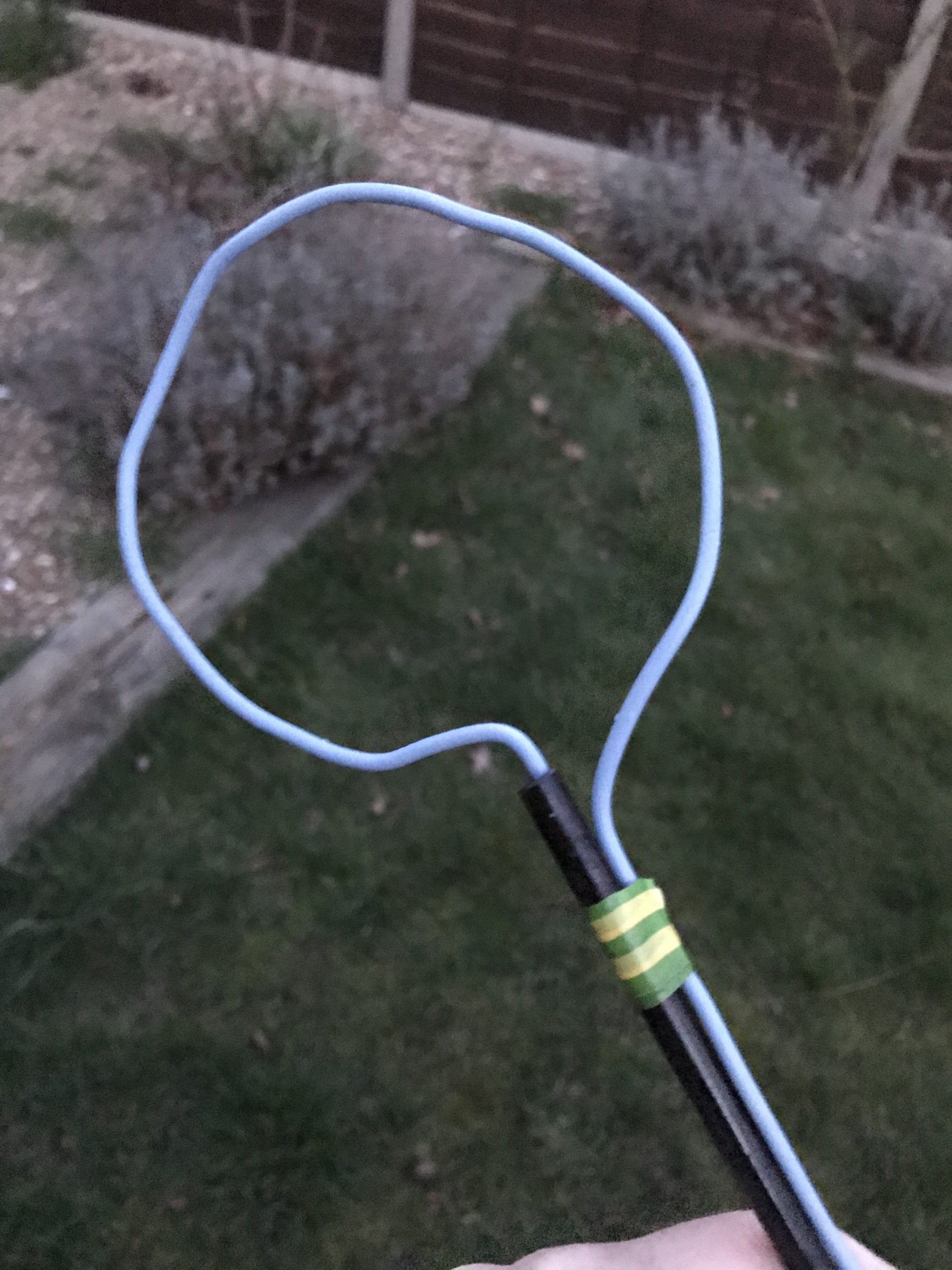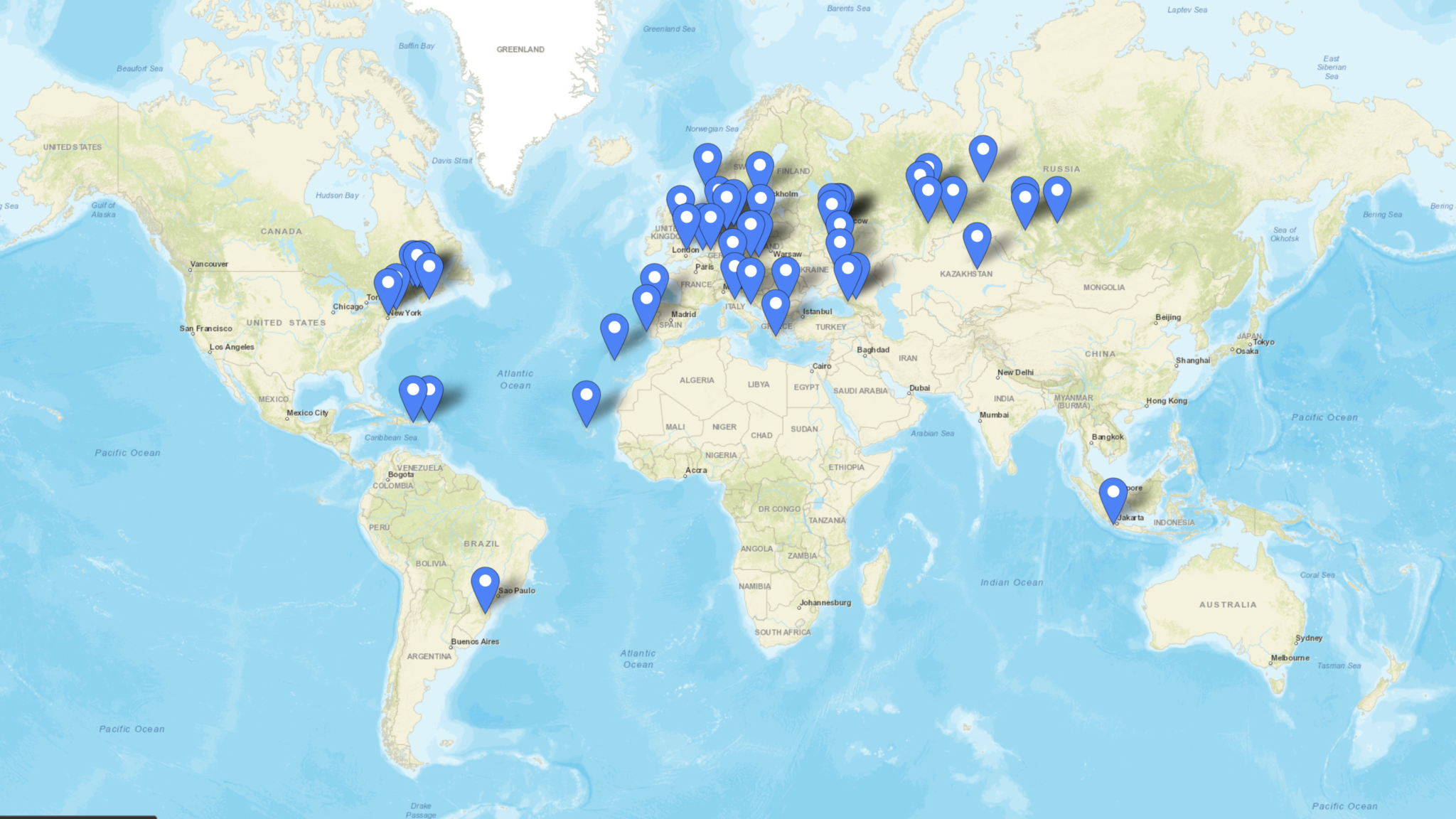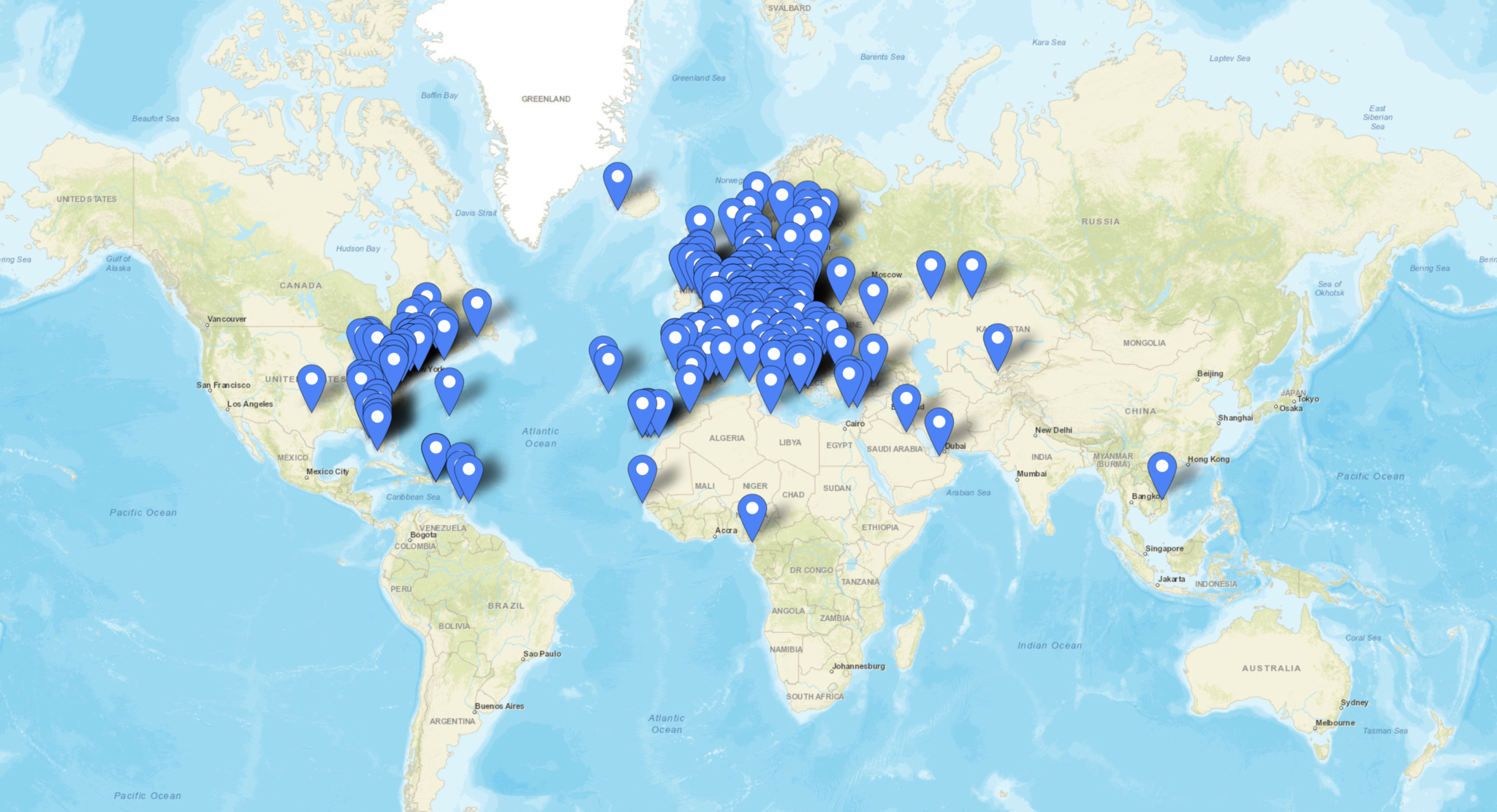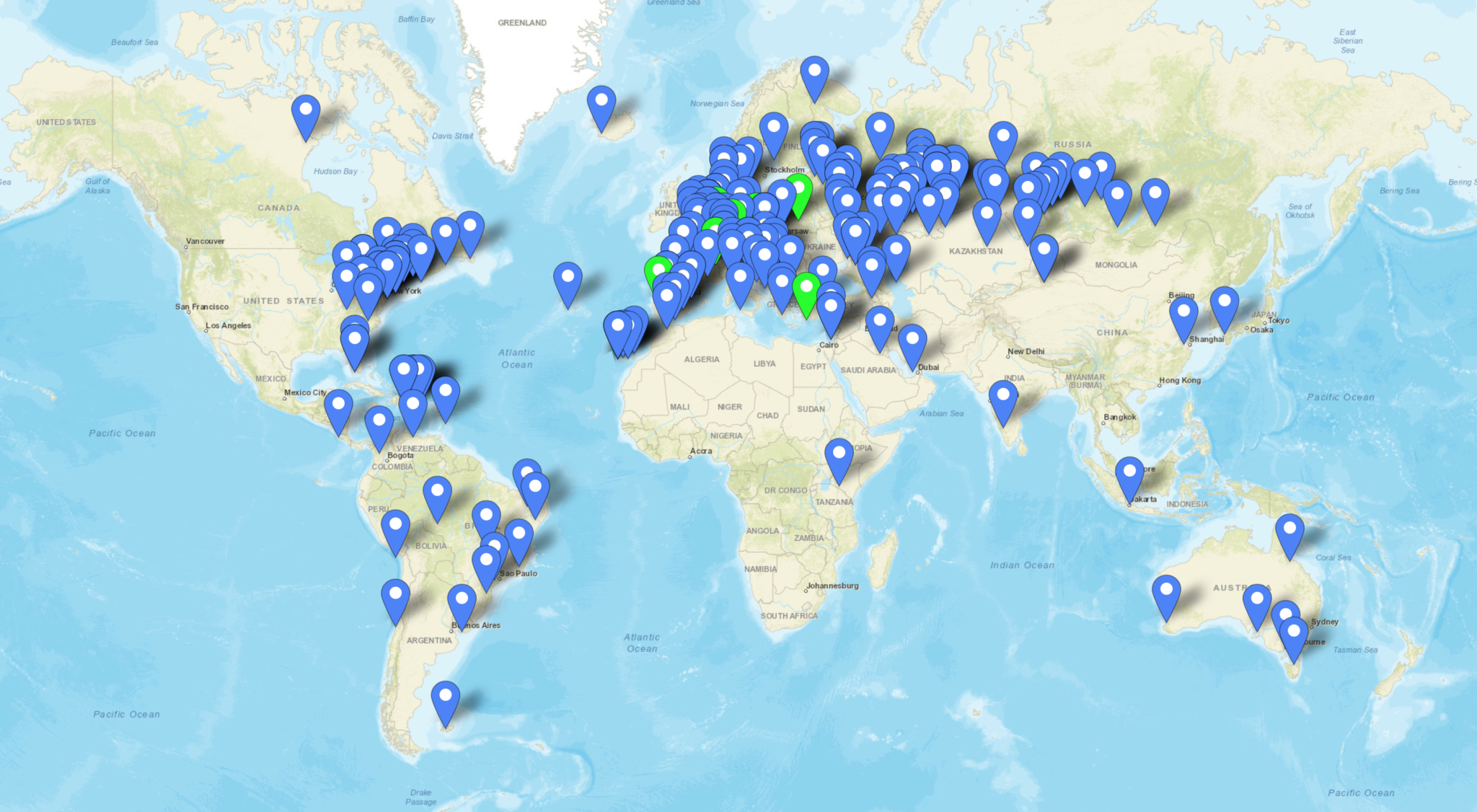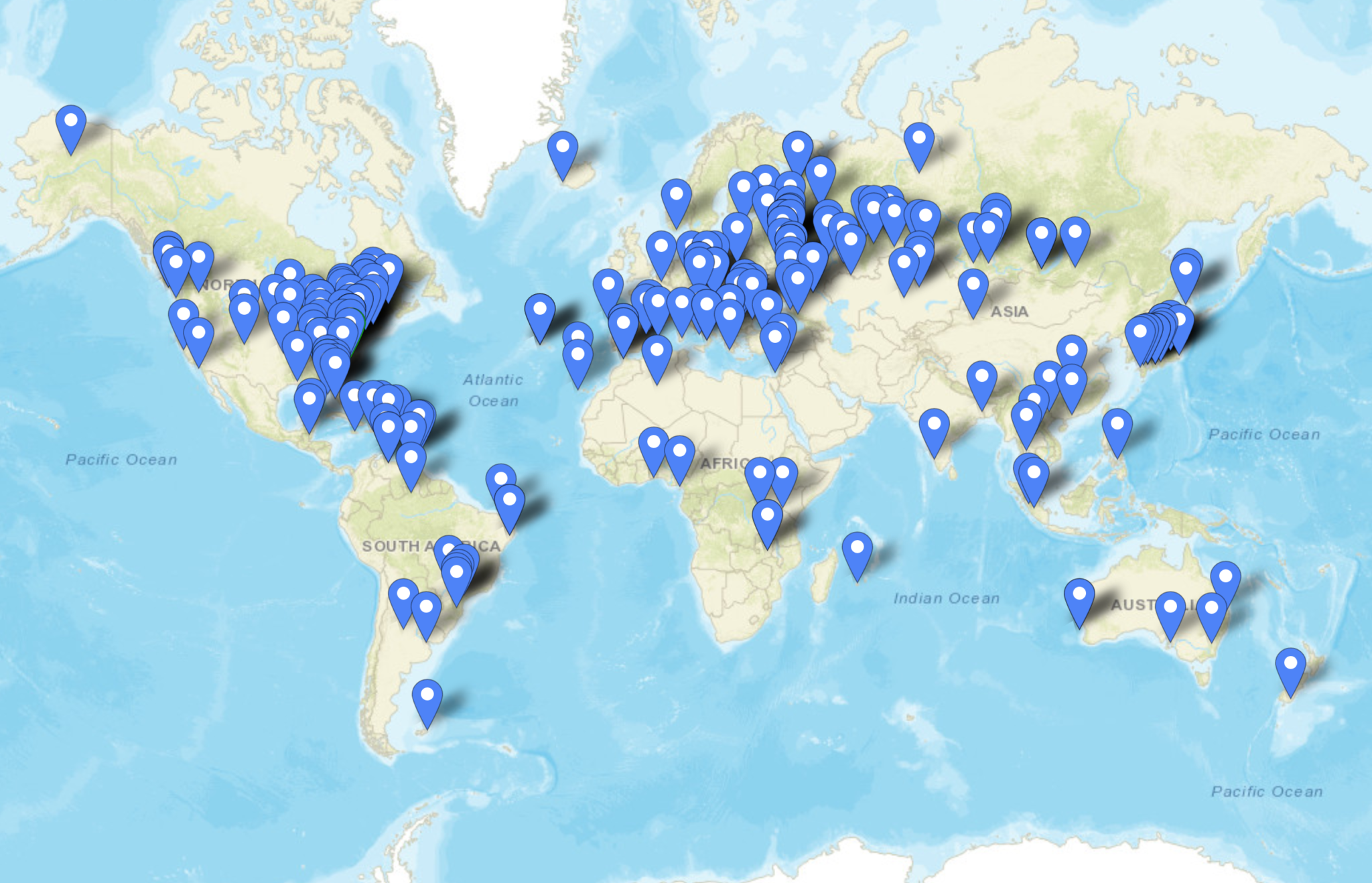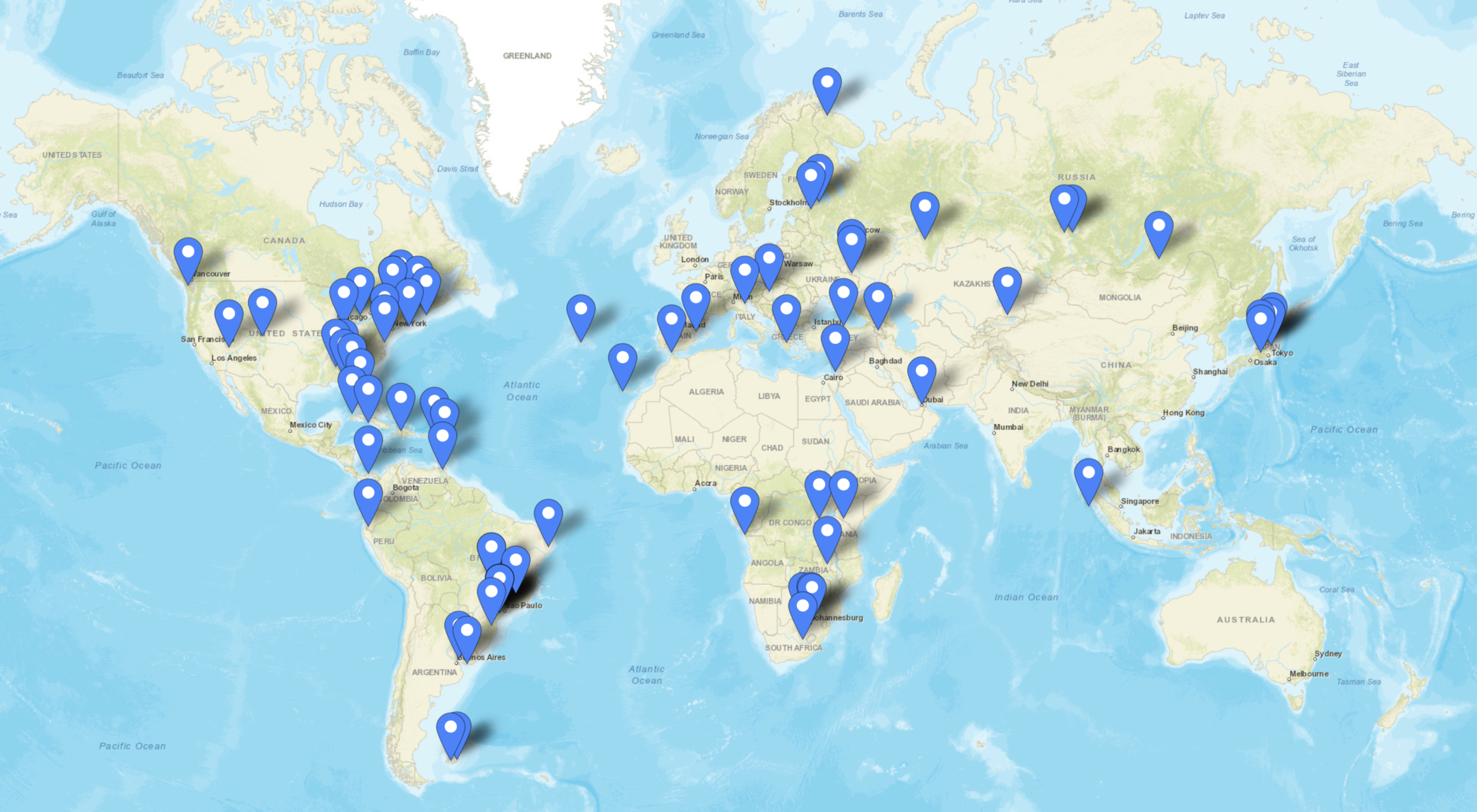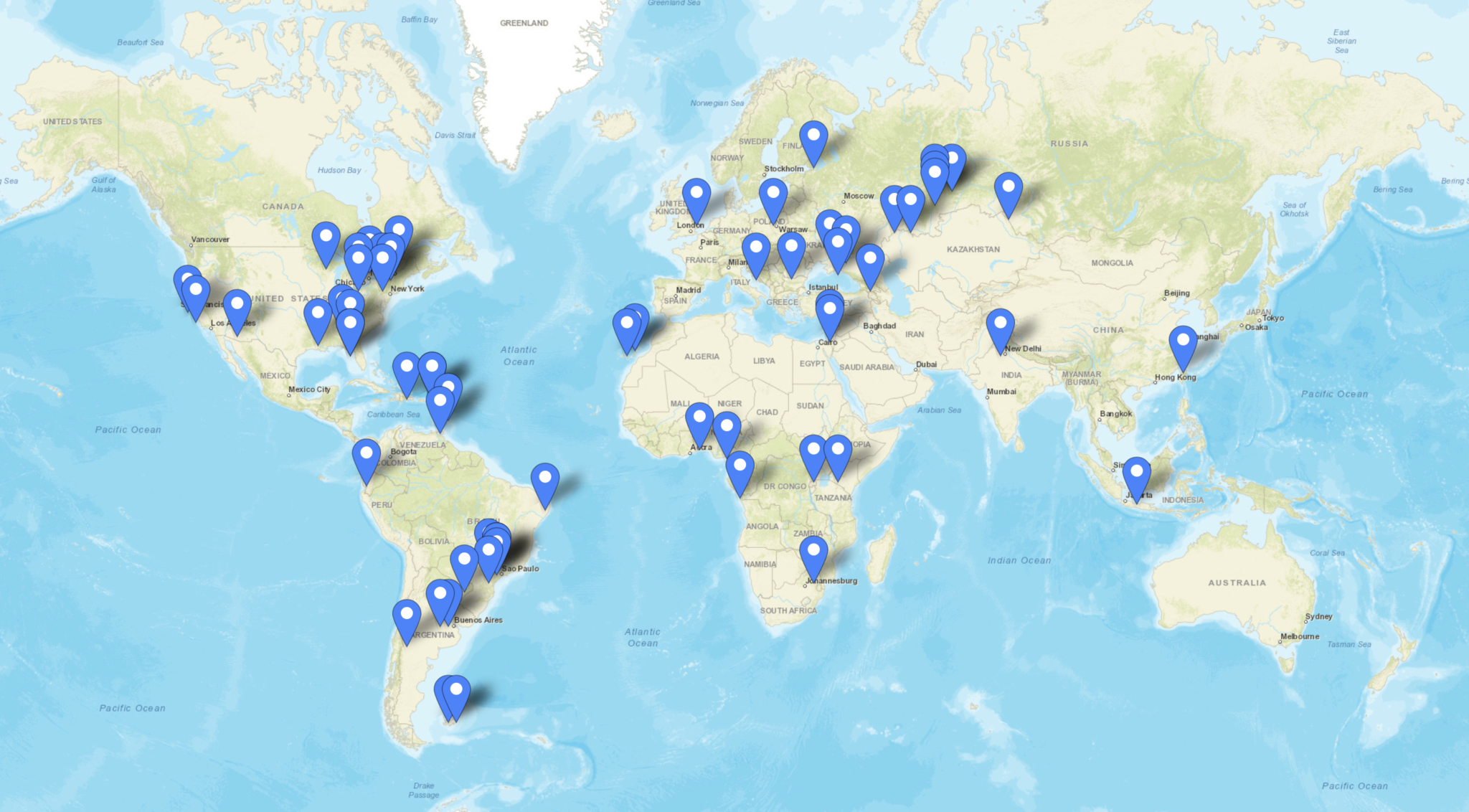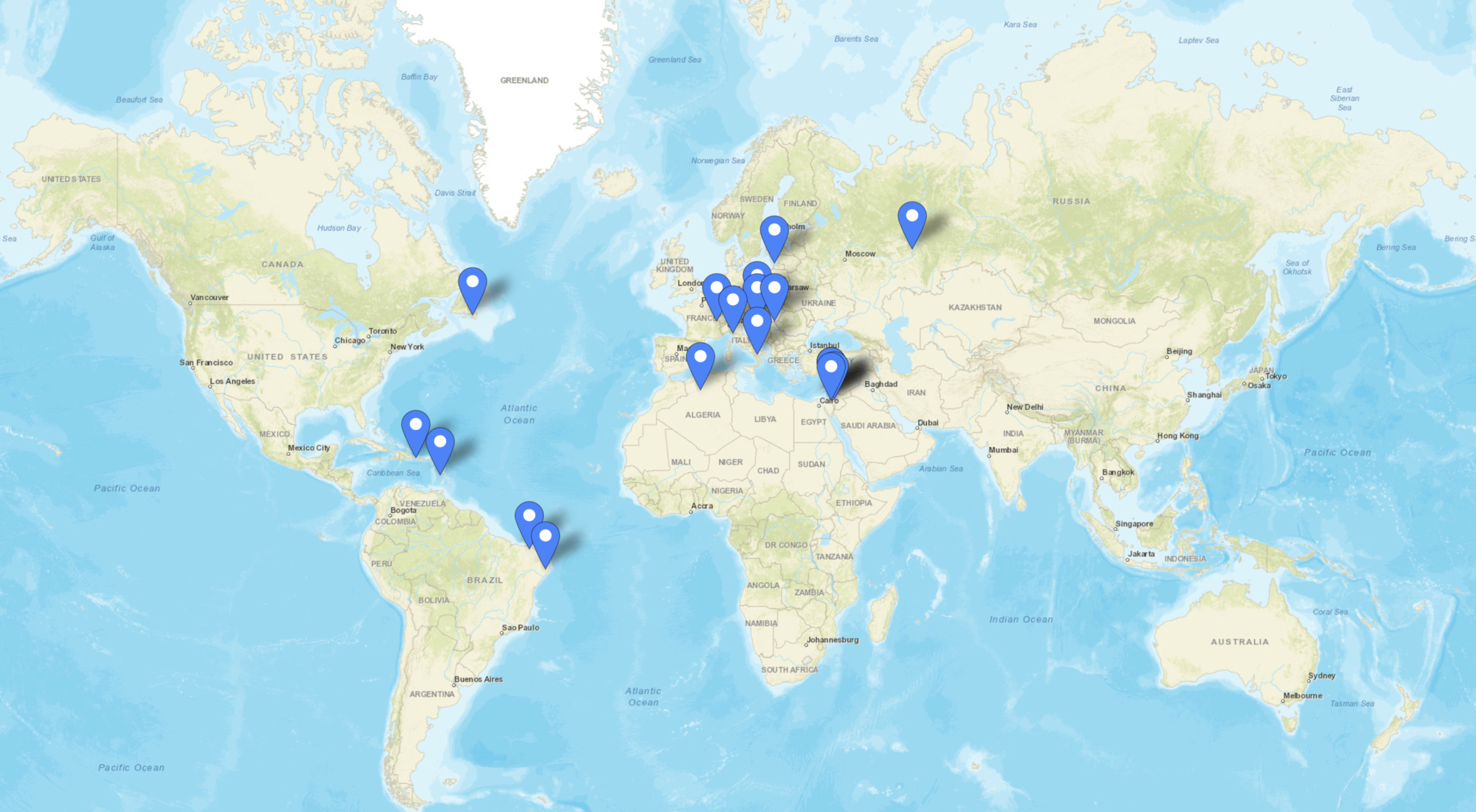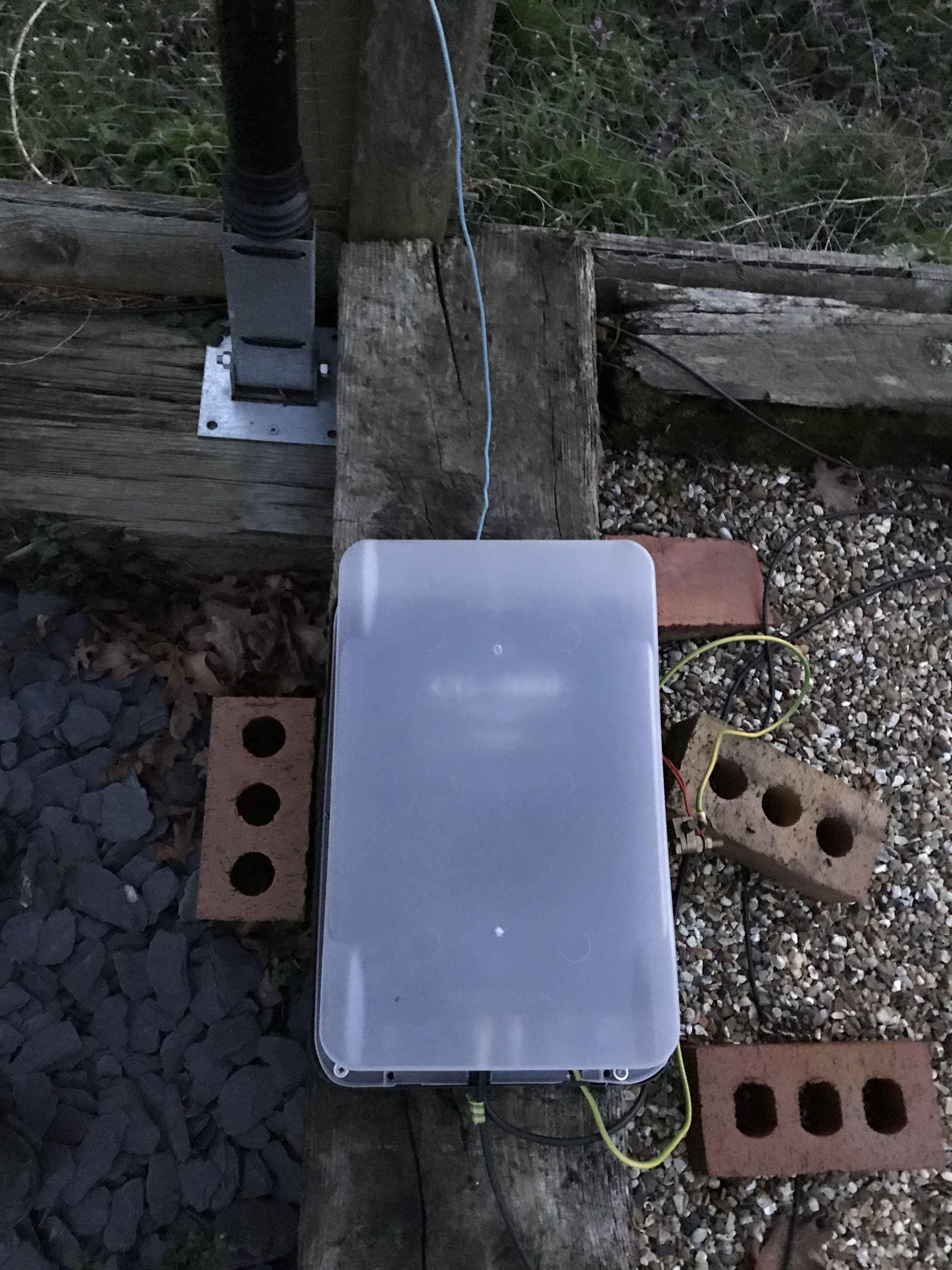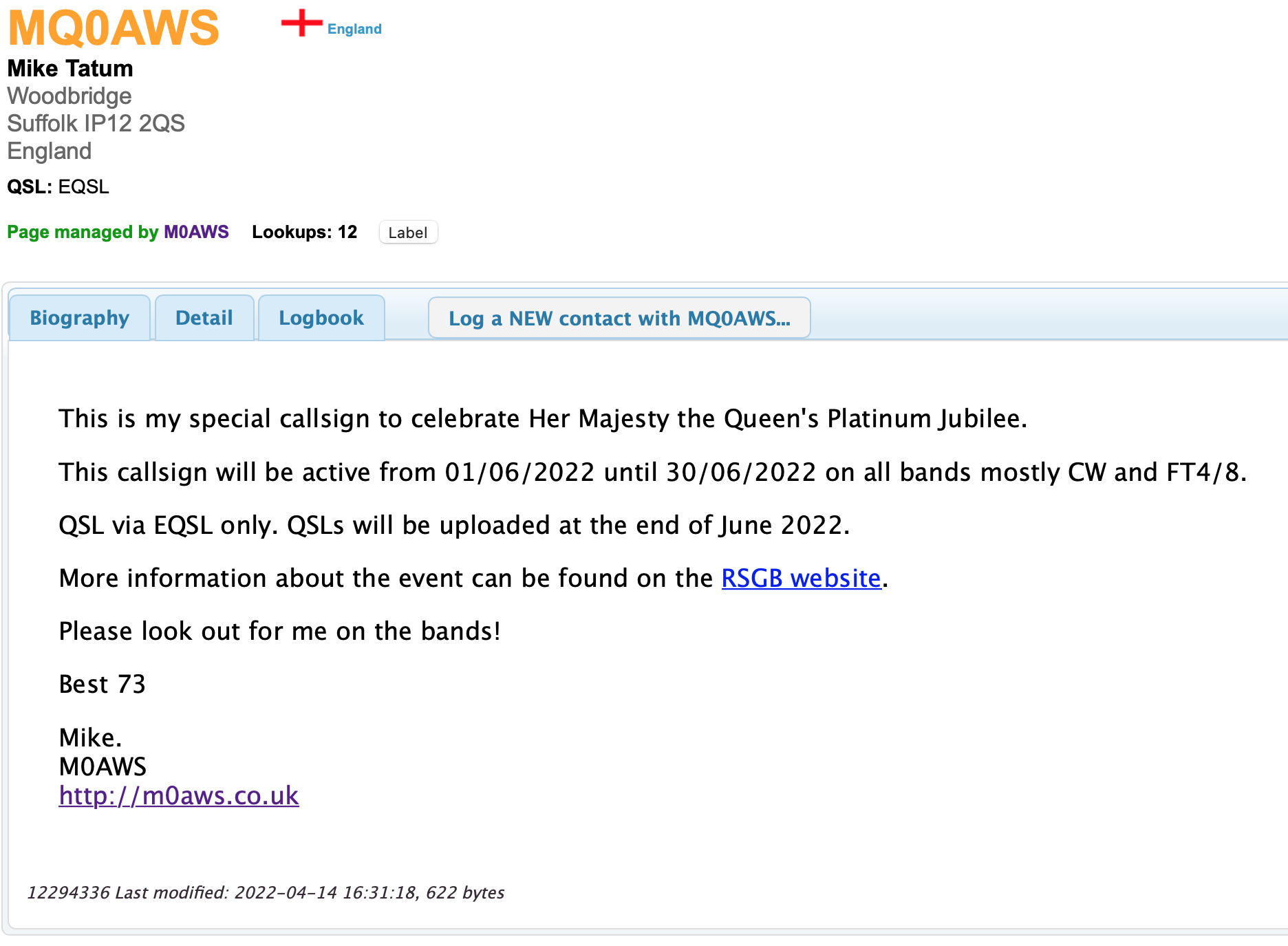Following on from the article I wrote about the performance of my multi band vertical antenna I’ve now put together a table showing it’s performance on each band as experienced over a period of 18 months.
It’s interesting to note the antenna wavelength measurements on each band as 13m (43FT) seems to be an almost perfect length for a simple multi band vertical HF antenna with excellent DX capabilities.

Looking at the information you can see that performance on the 160m band is poor. This is to be expected as the antenna is far too short for a band with such a long wavelength. I knew this would be the case from the outset and never planned to use this antenna on the 160m band. I’ve included the data here just for completeness. If you’re looking for a reasonable 160m band antenna that can fit into an average UK garden then take a look at my Inverted-L antenna article.
Performance on the 80m band is surprisingly good considering the antenna is only 1/6th of a wavelength long. With contacts into Indonesia achieved using relatively low power levels this antenna surprised me with its performance on the 80m band. A 1/4 wavelength antenna would of course perform better but, like all multi band vertical antennas for the HF bands there is always a compromise.
On the 60m band the antenna is pretty much a 1/4 wave vertical, it works great on this band and I’ve had a lot of fun chasing DX in the winter months. With the longest contact being into Brazil at 6144 miles this antenna performs extremely well for such a simple design.
On the 40m band performance is better still. With the antenna being just over a 1/4 wavelength long the point of max current is above ground level making this a very good DX antenna. With multiple contacts into Australia at distances over 10,000 miles this antenna is the ideal 40m band DX chaser for small gardens.
Moving up onto the 30m band this antenna now begins to really shine. Being a half wave long on 30m the point of max current is half way up the wire lowering the angle of radiation considerably. This results in excellent global coverage with contacts into Australia being a breeze. With the longest distance achieved being 11,776 miles into New Zealand this really is the goto antenna for fans of the 30m band with small gardens. This antenna easily out performs my 30m band Delta Loop design whilst giving better global coverage.
On the 20m band this antenna performs very well indeed. Considering it’s 3/5th of a wavelength long which is a strange length to have, it’s no slouch. Global coverage is excellent and working into Australia is relatively easy. I’ve yet to work into New Zealand on the 20m band using this antenna but, that’s mainly due to me not being on air at the right times. Best distance worked so far on this band is 10,656 miles.
On the 17m band the antenna is 3/4 wavelength long. This is a very useful length and easy to tune as it presents pretty much 50 ohm impedance at the feed point. Performance is simply stunning on 17m, if you can hear the DX you can work them. I am amazed at how well this antenna works on this band. It seems to have a low angle of max radiation making it excellent for chasing DX stations. Giving me my first contacts into Alaska and New Zealand this is my goto antenna for the 17m band.
On the 15m band this antenna is 7/8th of a wavelength long. Performance doesn’t feel as good as it does on 17m but, with the longest distance achieved being 8023 miles there’s really no reason to doubt it. With only 87 contacts being made on this band due to the fact that I always get trapped chasing DX on the 17m band and never make it any further up the bands, I’m sure this antenna will perform extremely well long term on 21Mhz. I just need to make more effort to get on this band.
The 12m band is one of the bands I didn’t expect this antenna to perform well on.
Being 1 and 1/8th wavelengths long it’s not a length that you would normally consider using for an antenna however, performance is excellent. This is most likely due to the point of max current being a fair way up the wire resulting in a low angle of maximum radiation. DXing is great fun with this antenna on the 12m band and it’s surprised me time and time again at how easily I’ve been able to work DX stations. With the best distance worked so far being into the Falkland Islands at 7973 miles, this antenna has huge potential on this band. Like the 15m band, I need to make an effort to spend more time on the 12m band and see how far I can push this antenna.
Finally we reach the dizzy heights of 28Mhz on the 10m band where the antenna is 1 and 1/4 wavelengths long. Again this is a useful length as it presents almost 50 ohm impedance at the feed point. DX performance on the 10m band is good. It’s probably very good however, like the 15m and 12m bands, I rarely make it up onto the 10m band and so I’ve not really given the antenna the time to prove itself at 28Mhz. My best distance worked so far on this band is 4872 Miles into the USA but, I’m sure I could easily do better if I committed more time to it.
I’ve pretty much covered all the good points of this simple multi band antenna so, now let’s look at the not so good points.
If you’re in the UK and are looking to work other UK stations then this antenna isn’t for you. Like all vertical antennas there isn’t much in the way of NVIS radiation and so you’ll find UK stations just won’t hear you. You’ll also often find you won’t hear UK stations at all due to the null at the top of the antenna that attenuates signals arriving from high/very high angles. For me this is fine as I wanted an antenna that was focused on DXing as much as possible.
From 10Mhz upwards the antenna also isn’t that good for working stations in nearby Europe. Most of the time you will only hear European stations that are more than 1000 – 1500 miles away, anything closer just doesn’t appear in the receiver. On the 15m and 12m bands often you will never hear European stations at all, only DX stations. This does of course reduce the QRM from UK/EU stations considerably making it easier to work those weak/QRP DX stations.
So as you can see, 13m (43FT) of vertical wire is probably one of the best lengths you can possibly use for a multi band vertical HF antenna especially if like me, you have a small garden to squeeze your antennas into. I don’t like to say it but, this could be the magical length we’re all looking for when making a multi band HF vertical antenna.
Tuning of the 13m (43FT) vertical antenna is achieved using my CG3000 remote auto ATU. I initially started off using my home-brew Pi-Network ATU but, changed over to the CG3000 so that in the winter months I don’t have to run out into the rain and wind to change bands. It’s important to note that the ATU must be at the base of the wire and not in the radio shack. It’s also important to note that I have 4 x 20m long radials connected to the CG3000 along with an earth spike at the base of the wire. This combination of ground and tuner works incredibly well with the ATU tuning on each band with ease in less than 3 seconds. I’ve also not had any issues with the CG3000 attempting to retune whilst in the middle of a QSO, once it’s initially tuned it doesn’t retune again until I either change band or make a large change in frequency.
The achieved SWR on all bands is <1.5:1 except for 160m where it is 1.8:1.
More soon …











